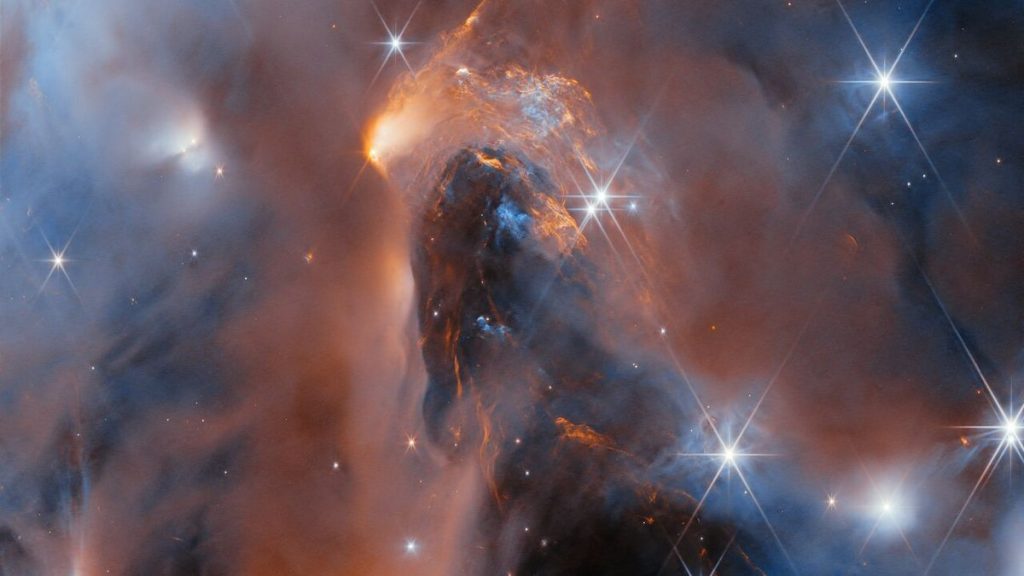The James Webb Space Telescope (JWST) has identified half a dozen free-floating planets wandering alone in the Perseus Molecular Cloud.
The planets, ranging between five and 10 times the mass of Jupiter, don’t orbit a star themselves. Instead, they are all thought to have formed like stars, condensing directly out of interstellar gas. In an added twist, one of the rogue planets is encircled by a disk of gas and dust that is forming moons or, perhaps,
“mini-planets.”
It’s not the first time that JWST has discovered free-floating planets. In 2023, for instance, astronomers using the powerful observatory found about 40 binary pairs of free-floating gas giant planets in the Orion Nebula. But the six newly discovered objects, found in the reflection-nebula and open-star-cluster-combo called NGC 1333, about 960 light-years away from us, provide strong clues as to how they formed.
Although JWST has the sensitivity to detect rogue planets smaller than five times the mass of Jupiter, it didn’t find any in NGC 1333. This fact sheds considerable light on how these free-floating planets formed. The planets of our solar system were born in a bottom-up process, accreting from raw materials in a protoplanetary disk of gas and dust encircling the sun, steadily growing larger and larger.
Related: James Webb Space Telescope (JWST) — A complete guide
The other means of forming planets is top-down, which describes how, under gravity, they collapse directly from a cloud of gas and dust, just like a star does. The lack of free-floating planets in the range of about one to five times the mass of Jupiter strongly indicates that five Jupiter masses is the lower limit for the top-down formation process. Of course, there could be many rocky, Earth-sized worlds gone rogue after being ejected from their planetary systems, but these would likely be too small for JWST to detect.
“Our observations confirm that nature produces planetary mass objects in at least two different ways — from the contraction of a cloud of gas and dust, the way stars form, and in disks of gas and dust around young stars, as Jupiter in our own solar system did,” said astrophysicist Ray Jayawardhana of Johns Hopkins University, who was a participant in the new discoveries.
This is remarkable, because it indicates that the smallest objects that form in the same way that stars do overlap in size and mass with some of the largest worlds that presumably form bottom-up and orbit around stars.
The discoveries therefore further blur the lines between what is a planet and what is not. To be considered a star, an object must undergo nuclear fusion reactions of hydrogen into helium to generate energy. The lowest mass that can accommodate this, by generating the core temperature and pressure required, is about 9% the mass of our sun, or about 93 times the mass of Jupiter. Below this minimum mass are brown dwarfs, which are gaseous objects that aren’t quite stars but are too massive to be planets. Some of them can, for a time, produce energy from the nuclear fusion of deuterium. Brown dwarfs have masses down to about 13 times the mass of Jupiter. It had been assumed that anything smaller could not burn deuterium and would be a planet in orbit around a star.
The rogue worlds found by JWST in NGC 1333, and the Orion Nebula before it, challenge this assumption. While they may not be massive enough to produce energy from the fusion of deuterium, they are not in orbit around another star and form just like brown dwarfs and stars do.
“We are probing the very limits of the star-forming process,” said Adam Langeveld, an astrophysicist also at Johns Hopkins University who led the new findings. “If you have an object that looks like a young Jupiter, is it possible that it could have become a star under the right conditions? This is important context for understanding both star and planet formation.”
Complicating matters is that the least massive of the six free-floating planets discovered has what seems to be a protoplanetary disk around it. Whether the objects that form out of this disk are classed as mini-planets or moons is a debate for the future.
What is not in dispute is that brown dwarfs can have orbiting planets, and in addition to the six newfound rogue worlds, Langeveld and Jayawardhana’s team also discovered a brown dwarf in NGC 1333 with a planet, which is a fairly rare find in itself.
“It’s likely that such a pair formed the way binary star systems do, from a cloud fragmenting as it contracted,” said Jayawardhana. “The diversity of systems that nature has produced is remarkable and pushes us to refine our models of star and planet formation.”
The next step, they say, is to follow up on the six free-floating worlds with JWST and characterize their atmospheres to learn more about their composition and how they compare to brown dwarfs and regular stars.
The research has been accepted for publication in The Astronomical Journal, and a pre-print is available via arXiv.org.

